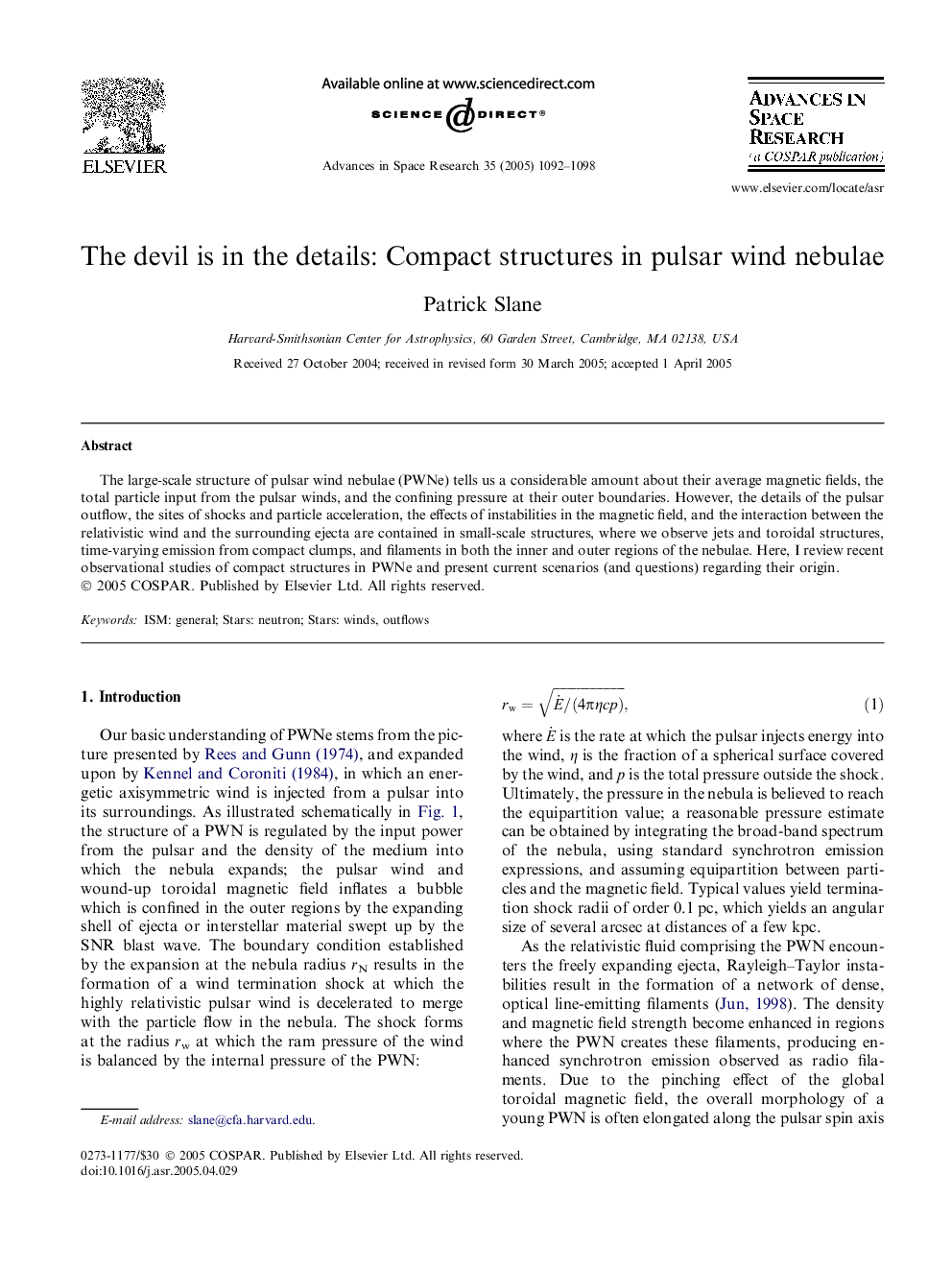| Article ID | Journal | Published Year | Pages | File Type |
|---|---|---|---|---|
| 10695955 | Advances in Space Research | 2005 | 7 Pages |
Abstract
The large-scale structure of pulsar wind nebulae (PWNe) tells us a considerable amount about their average magnetic fields, the total particle input from the pulsar winds, and the confining pressure at their outer boundaries. However, the details of the pulsar outflow, the sites of shocks and particle acceleration, the effects of instabilities in the magnetic field, and the interaction between the relativistic wind and the surrounding ejecta are contained in small-scale structures, where we observe jets and toroidal structures, time-varying emission from compact clumps, and filaments in both the inner and outer regions of the nebulae. Here, I review recent observational studies of compact structures in PWNe and present current scenarios (and questions) regarding their origin.
Related Topics
Physical Sciences and Engineering
Earth and Planetary Sciences
Space and Planetary Science
Authors
Patrick Slane,
